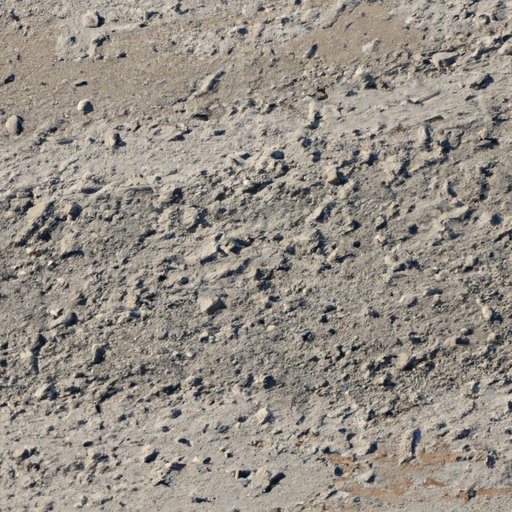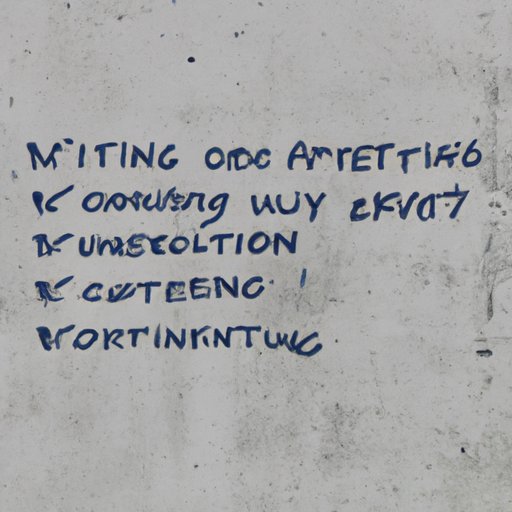How Long Does it Take for Concrete to Dry? Exploring Factors, Testing, and Best Practices
Concrete is an essential material in construction, providing a stable and durable foundation for buildings, roads, and other structures. However, one of the most significant challenges of working with concrete is accurately estimating how long it takes to dry. Proper drying time is crucial for ensuring the concrete reaches its full strength potential and reducing the risk of damage. In this article, we’ll explore factors that influence concrete drying time, different testing methods, how weather affects drying time, best practices for accelerating drying time, and common mistakes to avoid.
Factors that Influence Concrete Drying Time
There are many factors that influence concrete drying time, including:
Cement type
The type of cement used in the concrete mix plays a significant role in determining the drying time. Different types of cement have different chemical compositions, resulting in varying rates of evaporation and hydration. For example, low-heat cement produces less heat during hydration, resulting in a longer drying time.
Water content
The amount of water used in the concrete mix also affects drying time. A higher water-to-cement ratio leads to more water evaporating and a longer drying time. Conversely, a lower water-to-cement ratio results in a shorter drying time.
Temperature and humidity
The temperature and humidity of the environment in which the concrete is placed also impact drying time. Higher temperatures and lower humidity levels can result in faster drying times.
Concrete thickness
The thickness of the concrete layer influences drying time, with thicker layers taking longer to dry. This is because the moisture has to evaporate through the entire depth of the concrete.
Air movement
The speed and direction of air movement around the concrete surface also impacts drying time. More air movement leads to faster evaporation and shorter drying time.
Surface area
The size and shape of the concrete surface can affect drying time. Smaller surface areas tend to dry faster than larger surfaces due to a higher surface-to-volume ratio.
Presence of additives
Additives such as accelerators, retarders, and plasticizers can speed up or slow down the hydration process, affecting drying time.
Surface finish
The finish applied to the concrete surface influences drying time. Rough finishes allow for more air movement and faster drying times, while smooth finishes can slow down the process.
Importance of Proper Drying Time in Concrete Construction
Proper drying time is vital for ensuring the concrete reaches its full strength and durability potential. Rushing the drying process can lead to a weaker, more brittle concrete that is more prone to cracking or crumbling over time. On the other hand, waiting too long can lead to construction delays and potential damage if the concrete is exposed to external elements before it’s fully dried.
There are several tips and techniques for ensuring proper drying time, including:
- Using the correct amount of water in the mix
- Waiting until the concrete reaches its desired strength before subjecting it to external factors
- Allowing for proper ventilation
- Protecting the concrete from external factors such as rain, sunlight or freezing temperatures
Understanding the Different Methods for Testing Concrete Drying Time
Several methods can be used to test concrete drying time, each with its pros and cons:
Weight loss
This method involves weighing the concrete at regular intervals and recording the weight loss over time. The rate of weight loss indicates how quickly the moisture is evaporating, giving a rough estimate of drying time. However, this method can be time-consuming.
Electrical resistance
Electrical resistance devices measure the resistance of concrete to the flow of electrical current, which decreases as the concrete dries. These devices provide a quick estimate of drying time but can be affected by the presence of additives in the mix.
Moisture meters
Moisture meters measure the amount of moisture in the concrete, providing an estimate of how much moisture needs to evaporate. These devices are quick and easy to use but can be affected by the presence of surface moisture or additives in the mix.
Calcium chloride tests
Calcium chloride tests measure the amount of moisture being released from the concrete as it dries. These tests are considered the most accurate but can take up to 72 hours to produce a result.
How Weather Affects Concrete Drying Time
Weather plays a significant role in determining concrete drying time. Warmer temperatures and lower humidity levels lead to faster drying times, while cooler temperatures and higher humidity levels can slow down the process.
For construction projects in extreme weather conditions, extra precautions must be taken to ensure proper drying time. For example, in hot, dry conditions, covering the concrete with plastic or wetting it down periodically can help prevent cracking or premature drying. In cold, wet conditions, heaters or insulation may be necessary to accelerate drying time.

Best Practices for Accelerating Concrete Drying Time
There are several methods for accelerating concrete drying time:
- Increasing air movement around the concrete surface
- Using dehumidifiers or fans to remove moisture from the air
- Using accelerants or other additives in the mix to speed up hydration
The most effective method for accelerating drying time depends on several factors, including the thickness of the concrete layer, the presence of additives in the mix and the environmental conditions. Consulting with an expert can help determine the most appropriate method for a particular situation.
Common Mistakes to Avoid When Estimating Concrete Drying Time
Several common mistakes can lead to inaccurate estimates of concrete drying time:
Overestimating or underestimating drying time
Both overestimating and underestimating drying time can lead to construction delays and potential damage to the concrete. Accurately estimating drying time requires an understanding of the factors that influence drying time and the appropriate testing methods.
Failing to account for external factors
External factors such as temperature, humidity, and air movement can significantly impact concrete drying time. Failing to factor in these variables can result in inaccurate estimates of drying time.
Not allowing enough time for the concrete to dry
Rushing the drying process can lead to weaker, more brittle concrete that is more prone to damage over time. Allowing sufficient time for the concrete to dry ensures it reaches its full strength potential and minimizes the risk of damage.
Not following proper procedures for testing drying time
Using the wrong testing method or incorrect techniques can lead to inaccurate estimates of drying time. Following proper testing procedures and using appropriate equipment is essential for obtaining accurate results.
Conclusion
Estimating concrete drying time is essential for ensuring the strength and durability of concrete structures. Several factors influence drying time, including cement type, water content, temperature and humidity, and air movement. Proper drying time can be ensured by following best practices, understanding testing methods, and avoiding common mistakes. With proper attention to drying time, construction projects can proceed efficiently and effectively, resulting in a structurally sound and long-lasting finished product.
